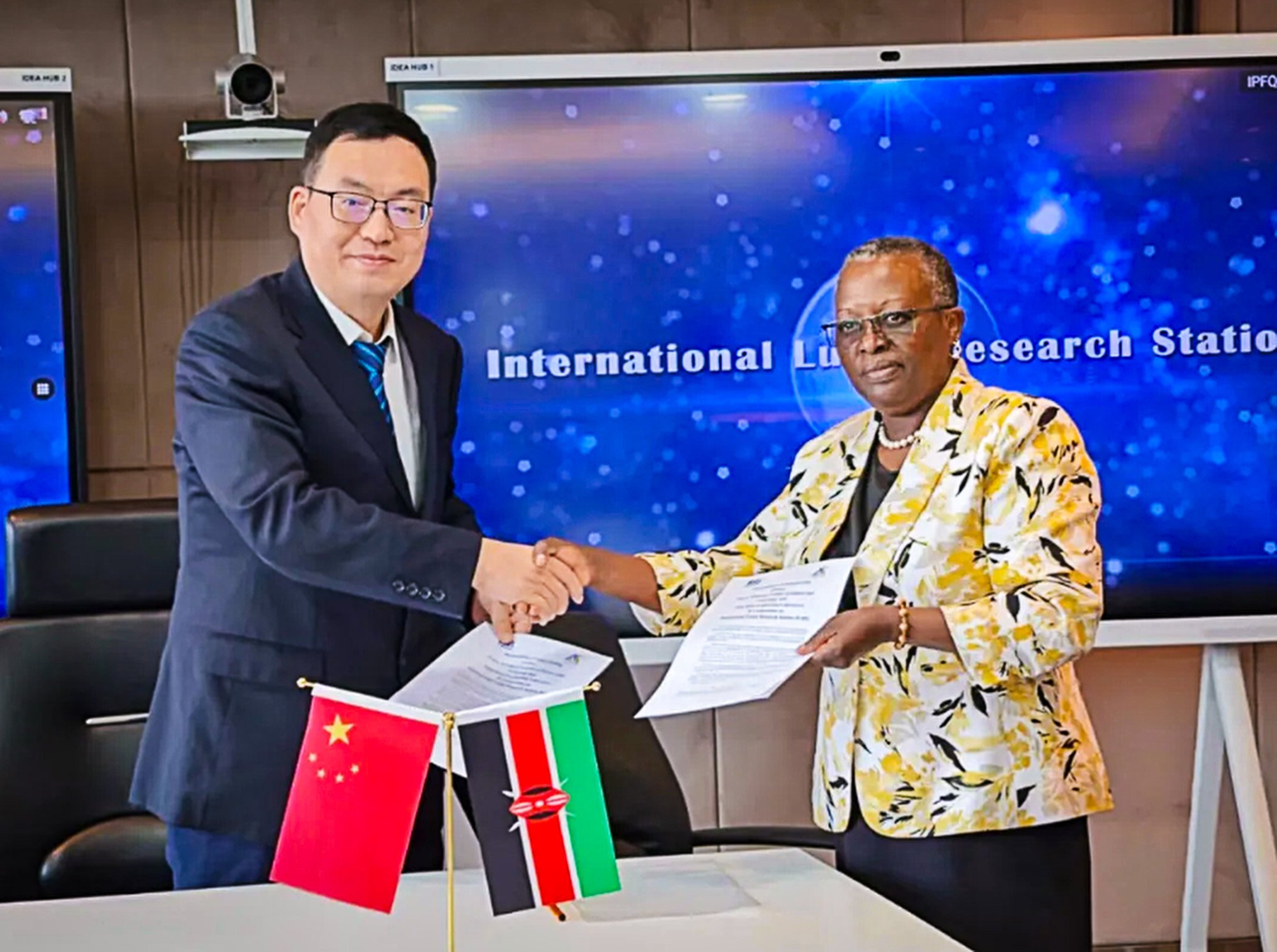
2 major space institutes in Africa join China-led moon project
- Ethiopia’s Space Science and Geospatial Institute and the Kenya Advanced Institute of Science and Technology have joined the ILRS
- The China-led project aims to build a permanent base on the moon by the mid-2030s and is seen as a rival to the US-led Artemis programme
On April 5, Hu Zhaobin, deputy director of China’s Deep Space Exploration Laboratory, signed the MOU with SSGI director Abdissa Yilma in the Ethiopian capital of Addis Ababa, according to the lab’s official WeChat account.
During their meeting, Yilma said the institute would actively participate in and promote the construction of the ILRS. Meanwhile, Hu said he hoped the project would help boost the development of Ethiopia’s aerospace sector and space exploration technologies.

Then on April 8, Hu signed the cooperation memorandum with KAIST acting principal Jennifer W. Khamasi during his visit to the Konza Techno City south of Nairobi.
Hu invited both Yilma and Mutisya to attend the International Conference on Deep Space Exploration, known as the Tiandu Forum, to be held in China in September.
These latest partnerships were formed during the lab’s trip to the NewSpace Africa Conference which was held in Angola in the first week of April.
At the conference, Hu’s keynote address included the first public call for African nations and organisations to join the ILRS initiative.
The SSGI is formerly the Ethiopian Space Science and Technology Institute, which was established in 2016 as a major move to boost space science and technology activities in the country for sustainable development.
KAIST, currently under construction at the Konza Techno City, is modelled after the Korea Advanced Institute of Science & Technology. It aims to lead pioneering research in science and technology, and nurture highly qualified scientists and engineers for Kenya’s industrialisation and modernisation, according to the institute’s website.

